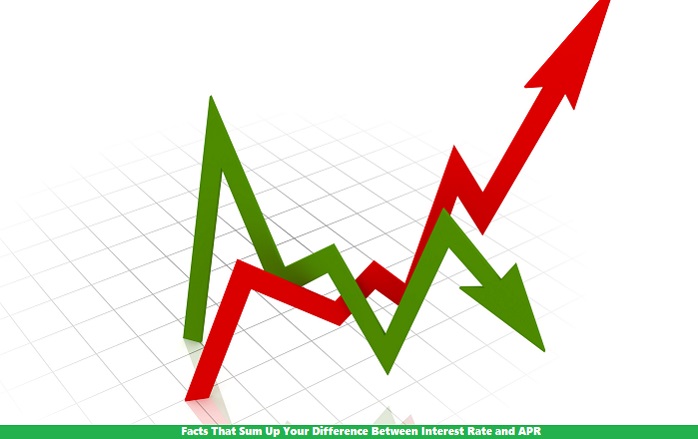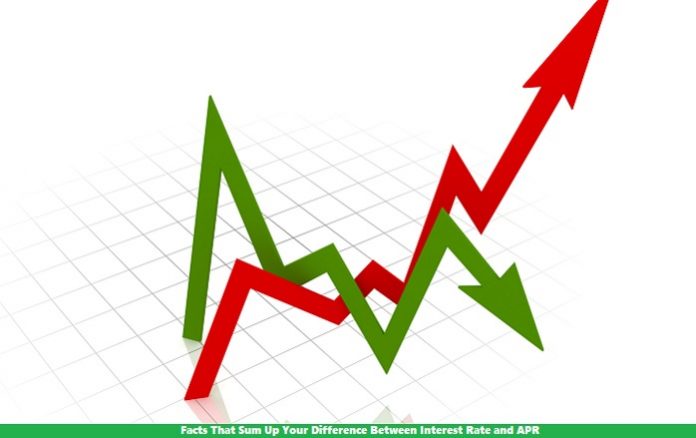Interest rate and Annual Percentage Rate APR are the two most used terms for discussing loan payments and mortgages. However, both of these terms come under the account of expense or charges but have a massive difference between the two.
To understand your loan terms in a better way, you should know the difference between Interest and Annual Percentage Rate. The subtle differences in their calculations indicate the clear distinction between these two.
If you are still left with some confusion in your mind regarding interest rate and annual percentage rate, read on to clear them out.
What is an Interest Rate?
The cost of the amount that you borrow as a loan from a bank or corporation is generally referred to as interest rate. Interest Rates could have a fixed parameter in certain cases. However, the amount of interest rate varies in different measurements.
Depending upon the economic activities, financial stabilities, business rates, and Federal funds under the Federal Reserve, interest rates can have a major influence. These interest rates could also get affected to adjust the overall market state.
Also read: What are Student Loans and How do they Work?
For instance, if you get a specific amount of money as a loan from a bank. There is a fixed interest rate of 2%. The value obtained by calculating the 2% of that certain amount could be your interest rate.
The federal boards keep on changing the interest rates as per the market condition and economic development. Usually, the spike in interest rates is seen when the government wants to enhance cash flow. To encourage more people to trade with the banks, usually higher interest rates are set.
What is an Annual Percentage Rate or APR?
Annual Percentage Rate or APR comes under an expense head. According to this term, all the costs or charges incurred when procuring a loan are summed up. From the interest expense to the mortgage costs, all of the additional charges come under APR.
An annual percentage rate is usually referred to as a measure with a broader and widened scope. Discount Prices, Broker costs, closing costs, payables, receivables, revenues, and other assets are expressed in the form of percentages when calculating the Annual Percentage Rate.
An APR is the same as an interest rate. The major difference can be seen in their formulas of calculations. APR is usually the same as the nominal interest rate. Nevertheless, the use of APR is rarely seen among lenders and borrowers because it might cause several confusions among the two parties.
Evaluation of Interest Rate and Annual Percentage Rate
The major difference between the interest rate and the annual percentage rate is when and how these two terms are determined. If we talk about Interest rates, these are merely associated with the borrower.
Your credit score and payment history would result in the analysis of your interest rate. If you have a negative credit score, you might be offered a low-interest rate and vice versa. All the monthly payments are based on your interest rate and the total balance your account carries.
Also read: 7 Factors Need Consideration Before Sanctioning Banks Loans
In the case of the Annual Percentage Rate, it is not determined by a borrower’s parameters. Since a lender is responsible for carrying out all the methods to systematically format an annual percentage rate by following the provided criteria, a borrower has nothing to do with an APR.
The composition of an annual percentage rate depends upon the additional costs and mainly the lender costs. These charges may vary to a great extent depending upon the lender services you are taking. The loan plan you have chosen and the company you are associated with.
Limitations of Annual Percentage Rate APR
The lender service costs have a huge impact on the overall composition of an annual percentage rate; this could result in an underlying shadow on your mortgage for the rest of your loan life.
Sounds confusing?
Well, it certainly indicates that having an APR would cost you much more if you plan to sell or refinance your home. The main reason for the additional costs is the variable nature of the annual percentage rate.
Because lender services can fluctuate, one cannot be sure how an annual percentage rate would come out.
Also read: What Happens When You Default on a Loan?
No one can ever predict the future of interest rates. Due to this unpredictability and uncertain situation, the Annual Percentage Rate could lack efficacy. Apprehending the accurate costs with an APR is nearly impossible.
What is a Good Annual Percentage Rate?
A good and fair annual percentage rate could be observed depending upon the interest rates when it is calculated. As APR rates fluctuate a lot based on different parameters of calculations, your APR rate could be adjusted according to your credit score.
If someone has a fairly positive credit score, he could experience a good APR based on the best available rate. However, APRs can always scale up your total expenses because lenders usually burden the costs by adding additional APRs as penalties if payment is left undue.
How to Compare Interest Rate and APR for Mortgage?
For a mortgage, calculating an annual percentage rate would include the costs of interest rate plus the closing fee charges. This indicates that no matter if the interest rate is affordable or not. If your lender charges you a high closing fee, your APR would consequently have a scaled-up rate.
However, with mortgages, interest rate, and annual percentage rate varies from lender to lender.
Interest Rate vs. Annual Percentage Rate – Which one is better?
Your main concern should be about the monthly payments when you plan to live in a house for more than 10 years. Therefore, focus on the interest rates more than the APR. A low-interest rate can save you from several expenses in the longer run.
Final Verdict
Each loan would have different interest rates and annual percentage rates. Make sure that you check for each term and condition before signing up for a loan plan. To get a fair comparison, you should compare one’s APR and interest rate with the other one. Good luck!












Add Comment